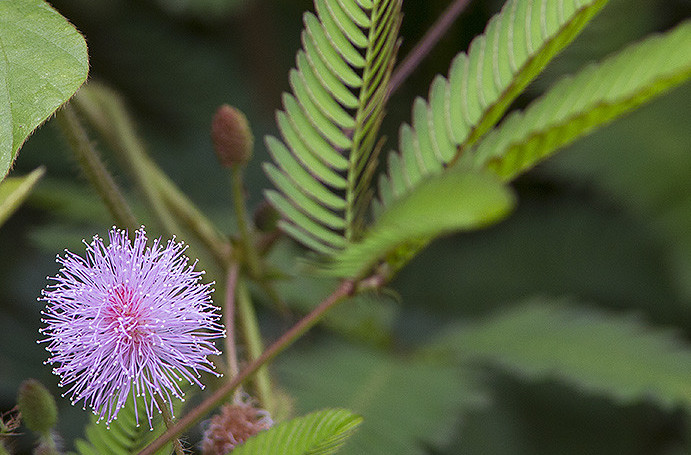By Jade Flint, Culture Editor

What is your miracle? I pondered this imposing question from my advisor frequently while on my transatlantic journey and was met with multiple answers.
While in Ghana as a Young AfricanA Leadership Initiative (YAALI) Fellow, I was properly introduced to a quiet character omnipresent in the shadows of my life; the mimosa plant is also called the sensitive plant because it’s leaves have an ephemeral sensitivity to physical force. When touched by a human hand or shaken by fierce winds, the leaves retract into themselves like a turtle into its shell. Our guide at the Last Bath at Assin Manso told us that our ancestors knew about the plant while still on the continent and used that same knowledge across the Atlantic to invade the brutality of slave-catchers. The plant has traveled all over the world, follows us, and shows us that it’s time for our return. The return is my miracle. As I stooped down to let my physical energy bear witness to the mysteries of nature. Revealing its inner leaves to my touch, the mimosa plant is a reminder of our collective memory and resilience.
“There is no beginning, no ending; only change and growth.” – Daniel Black
The Year of Return. The present year symbolically denotes 400 years since the first enslaved Africans were ripped from the bosom of their free Motherland to the brutality of chattel slavery in Jamestown, Virginia. Generations of Africans were subjugated to physical and psychological dehumanization. Trauma to be unpacked with few tools to truly cope. My transatlantic journey unfolded more and more on how truly miraculous it that we survived. I pondered on the effects that must have reverberated throughout generations of Black people to come. I tried to identify different methods by which we have chosen to cope with such injustice, but the only approach that seemed most effective was art. The act of creation is fruitful for the human psyche to seek out reasonable possibilities outside of the ordinary. To transcend our physical limitations in our various colonial relocations within the Black Atlantic to a window of limitless spiritual possibilities in Black consciousness.
Our very DNA gives way to the sometimes traumatic, other times joyous generational links that started in Ghana and other parts of Africa and now reside in the U.S., Canada, the Caribbean, Central America and all over the world. I recognize that I feel even closer to the cultural traditions and artistic productions for our ancestors. In our monumental return to Africa, I experienced firsthand the origin of the Ashanti Adinkra symbols that I was first introduced to at Howard through the work of AfriCobra professors and painters, Akili Ron Anderson and James Phillips. The Adinkra symbols were chosen as the visual semiotics of the AfriCobra collective as a veneration to West African culture but also a reclamation of their stolen heritage.
The mimosa plant is represented in Adinkra symbols as “Aya” which means endurance. The symbol itself resembles a fern, a sturdy plant that can thrive even in the most brutal conditions. Like the mimosa plant, our people are numerous, attentive and resourceful. We always make a way where there seems to be none. The recurrence of this visual symbol and the physical manifestation of it in my life reflect back and reaffirm my ideas of Black art as a tool for collective healing and means by which we must remember. Pay attention and be vigilant in your own life to your own modes of return. There are lessons to be gleaned from the seemingly everyday routines of life. There is healing to be done so get to it.

